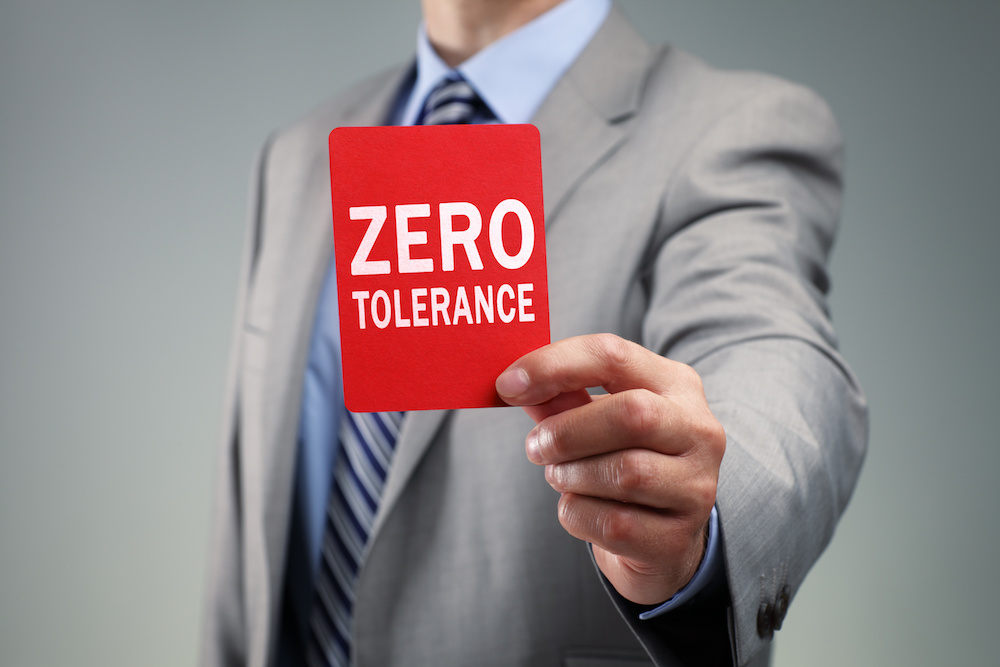 The recent launch of a new ‘zero tolerance’ policy towards the abuse of practice staff is the latest attempt by the NHS to reduce the number of assaults on NHS staff.
The recent launch of a new ‘zero tolerance’ policy towards the abuse of practice staff is the latest attempt by the NHS to reduce the number of assaults on NHS staff.
Part of a new violence reduction strategy launched by the Department of Health and Social Care, the new, zero-tolerance approach aims to protect the NHS workforce against deliberate violence and aggression from patients, their families and the public, and to ensure offenders are punished quickly and effectively.
The new plans follow the Assaults on Emergency Workers (Offences) Act, which was recently brought into law – and will see the maximum prison sentence for assaulting an emergency worker double from six months to a year.
The strategy includes:
- the NHS working with the police and Crown Prosecution Service to help victims give evidence and get prosecutions in the quickest and most efficient way
- the Care Quality Commission (CQC) scrutinising violence as part of their inspection regime and identifying trusts that need further support
- improved training for staff to deal with violence, including circumstances involving patients with dementia or mental illness
- prompt mental health support for staff who have been victims of violence
Much-needed
The move is, without doubt, much needed. The most recent NHS staff survey showed that more than 15% of NHS employees have experienced violence from patients, their relatives or the public in the last 12 months – the highest figure for five years. Meanwhile, an investigation in 2017 revealed that two thirds of GPs had experienced some form of abuse from patients.
Crucially, to understand the reasons behind the rise in reported violence, the strategy will allow staff to more easily record assaults and other incidents of abuse or harassment. Trusts will be expected to ensure every incident is investigated in full and lessons used to protect staff from future incidents.
What’s more, the government is also drawing up plans for violence and abuse data from across the NHS to be reported nationally. This should allow the government and NHS England to determine which staff are most vulnerable to violence and allow for appropriate action to be taken.
Mixed views
The BMA welcomed the new measures – but called for tougher sentences to try and reduce the number of assaults on NHS staff. BMA GP Committee chair Dr Richard Vautrey said: “GP practice staff are all too often subjected to unacceptable abuse and even attacks from patients who they are trying their best to help.
“As pressures increase within the NHS, with waiting times increasing as practices and hospitals struggle to manage rising workload within inadequate funding, it can be understandable why patients can be frustrated but that can never justify taking that frustration out on those on the frontline trying to care for them.”
The change to this year’s GP contract clearly helps – practices are now able to refuse to register patients if they have a violent flag against their record. They can also remove ‘mistakenly registered’ violent patients under the normal procedures.
It’s clear however, from talking to practice managers, that the problem will not go away until NHS bureaucracy and processes improve. One practice, for example, said that they tried to delist an abusive patient but found the NHS England experience so painful to the point where it almost “more distressing than the abusive incident”.
Dr Vautrey echoed those sentiments in his response to the new policy when he said: “This year we secured improvements to the way the violent patient/safe haven DES operates but there are still too many incidents where commissioners are slow to support practices seeking to take appropriate action when patients overstep the line with their behaviour, and the new initiative must address this.”
A downloadable policy document outlining how to deal with violent and abusive patients is available to Practice Index PLUS members – click here to download the document.
Changing forms of aggression
Other critics of the new policy suggest that it’s more of the same old policies that haven’t worked in the past, and that the new policy still doesn’t address the non-physical abuse.
One practice manager told us: “Aggression can take many forms and is about much more than physical abuse. Our frontline reception team experience all sorts of threats and verbal abuse. This policy does very little to address this, while fixating on physical violence. It seems to me like the policy is just a rehash of something that has been issued more than once before. Zero tolerance has to apply to threats and verbal abuse too.”
Another interesting viewpoint that the new zero tolerance policy fails to cover off is protection from litigation. A CCG employee commented to us that clinicians must be exempt from litigation if they withdraw or alter treatment after being on the receiving end patient violence. Without this exemption there will always be concerns.
Tackle the root cause
The final word on this blog is related to the call we’ve heard from multiple PMs to tackle the root cause of aggression and abuse in practices – something that is expertly summed up by Charles Moor in the Spectator.
He wrote: “There are eternal reasons, such as the inherent nastiness of some people, and wider social ones, such as drug abuse. Are there also specific NHS-related ones too, though? The worst aspects of the NHS are not usually medical: they are to do with a bureaucracy which puts patients last. It is utterly extraordinary, for example, that a waiting time of four hours in A&E is now the norm or even, it would seem, the (often missed) target. Often have I sat there wondering not at the aggression of patients, but at their quiet acceptance of such ill treatment. It is wrong when patients attack, but not surprising.”
So, while the zero tolerance policy is to be welcomed, as is so often the case in the British healthcare system, it appears more still needs to be done to better protect GP practice staff. Bureaucracy is still a huge headache too – and one that is unlikely to be remedied soon.
How would you beef up the zero tolerance policy? How do you deal with abusive patients? Let us know by commenting below or take it to the Practice Index forum thread here.
———–
Topics trending in the forum:
Notifying managers of sickness
Staff relatives as practice patients
Managers as partners
Under 65 flus
Data Security and Protection Toolkit





0 Comments